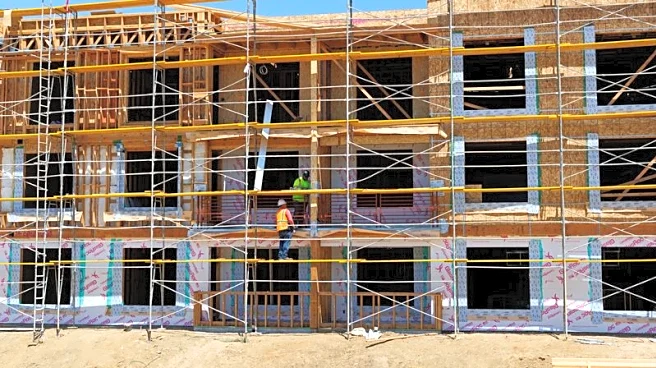What's Happening?
LGI Homes, Inc. has reported its August 2025 performance, closing 372 homes, including 14 single-family rental units, across 142 active communities. Despite high mortgage rates and a chronic housing deficit, LGI Homes has shown resilience by prioritizing volume over margins. The company has adapted its product offerings to cater to affordability-sensitive buyers, introducing new floor plans with accessible pricing. LGI Homes' strategic shifts include inventory optimization and share repurchases, aiming to mitigate affordability risks. The company's Q3 guidance projects 1,100-1,300 closings, reflecting its focus on maintaining volume amidst market stasis.
Why It's Important?
LGI Homes' performance highlights the challenges and opportunities within the U.S. housing market, characterized by high demand but constrained by affordability. The company's strategic focus on entry-level buyers and volume preservation is crucial in navigating the high-rate environment. LGI Homes' ability to maintain gross margins despite lower volumes suggests operational efficiency, which is vital for sustaining growth. However, the broader market's structural challenges, including supply deficits and affordability gaps, remain unresolved. LGI Homes' adaptability in product offerings and cost management positions it as a potential catalyst for growth, but the market's recovery depends on macroeconomic factors.
What's Next?
LGI Homes plans to continue its strategic focus on volume and affordability-sensitive buyers, with Q3 guidance projecting significant closings. The company's inventory optimization and product diversification strategies are expected to resonate with buyers, potentially driving growth. However, the Federal Reserve's cautious stance on rate cuts and the ongoing supply-demand imbalances pose risks to LGI Homes' ability to rely on rate-driven demand recovery. The company's withdrawal of full-year guidance highlights the volatility of its operating environment, and its future performance will depend on macroeconomic developments and buyer sentiment stabilization.












